Admiring the New York City skyline from Central Park © Roberto Nickson
Known for its bustling crowds, iconic yellow cabs, towering skyscrapers and generously sized pizzas, New York is the most populated city in the United States with more than 8.5 million people. Divided into five boroughs: Brooklyn, Queens, Staten Island, the Bronx and Manhattan, the New York skyline is recognised globally.
Despite the hustle and bustle of city life, there are plenty of pockets of nature both close to the city and just beyond, where locals and visitors alike can soak up the wonders of this northeastern region of America. In fact, there are 1,700 parks and playgrounds within the five boroughs. Here are some of our favourites.
Central Park
Arguably one of the world’s most famous parks, Central Park is a 3.5 square mile parkland in upper Manhattan. Central Park was the first public park in the United States and is now the most visited park in the country, hosting an estimated 42 million visitors annually. The Park covers 341 hectares and includes 55 hectares of woodlands, 101 hectares of lawns and 61 hectares of water in seven manmade lakes or ponds — not to mention the 26,000 trees. Central Park is also home to a variety of wildlife including squirrels, chipmunks, raccoon, possums and over 20 species of birds. Both locals and visitors can wander through Central Park enjoying the escape from the city.
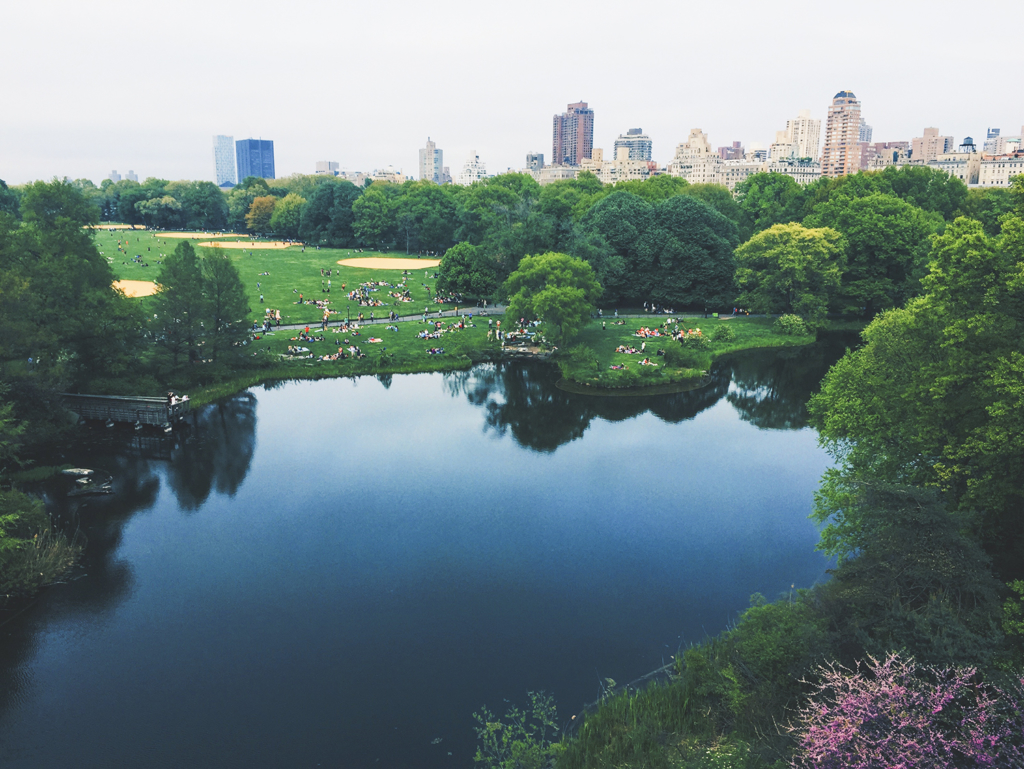
Central Park from above. © Becky Pan
High Line
The High Line opened in 2009 and is a public park built on a historic freight rail line elevated above the streets on Manhattan’s West Side. Essentially the High Line is a piece of industrial infrastructure that has been repurposed as a public green space. The 1.45-mile-long strip runs from Hudson Yards to the northern corner of Chelsea. The park is maintained by Friends of the High Line, in partnership with the New York City Department of Parks & Recreation. The area features wildflowers, outdoor art and breathtaking views of the city.
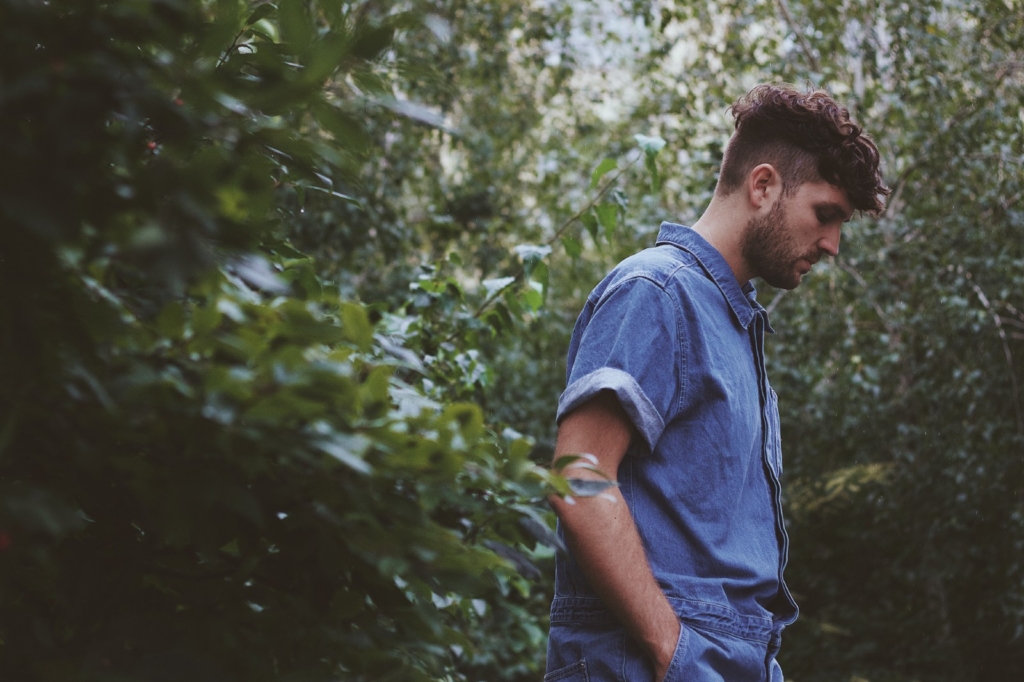
Immersed in the High Line. © Afa Ah Loo
The High Line is open to visitors all year round with details published on the Friends of the High Line website. WildArk ambassador, Emma Pocock, recently wrote a journal article featuring her experience on the High Line. Check it out here.
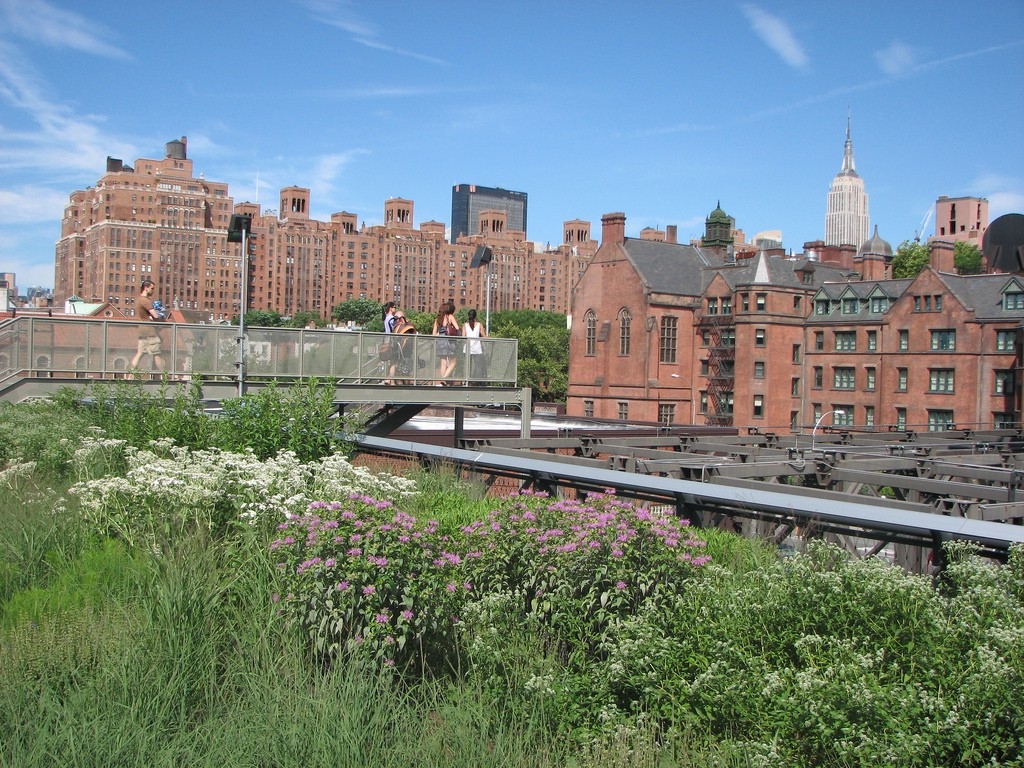
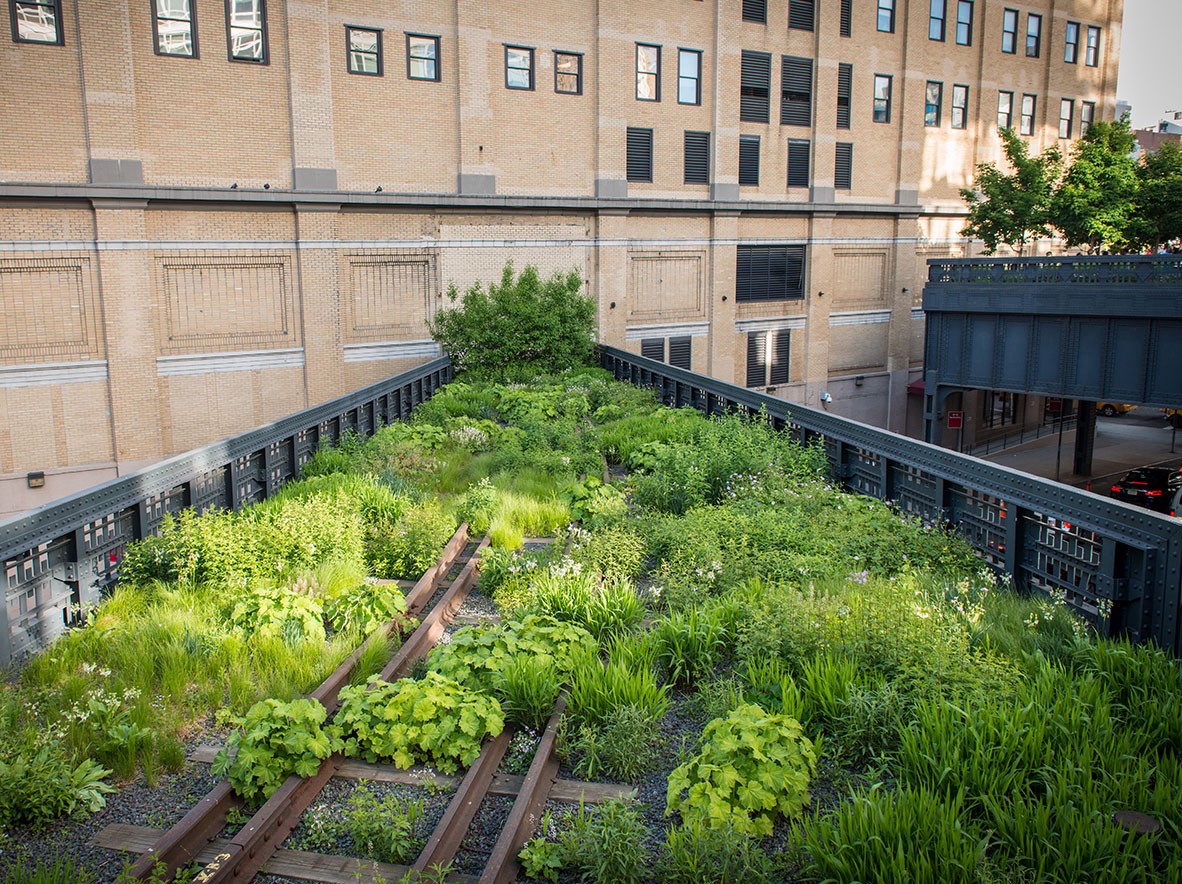
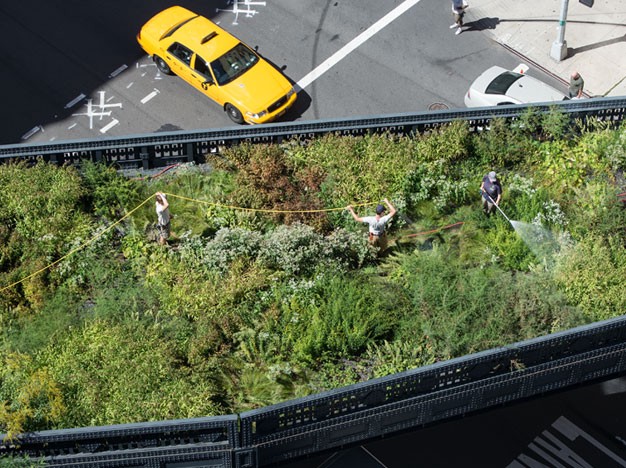
Image courtesy of the Friends of the High Line
New York Botanical Garden
The New York Botanical Garden is located in the Bronx of New York and is an iconic living museum that houses the world’s largest plant research and conservation programs. Founded in 1891, the gardens feature over one million tropical, temperate and desert flora on an area of 250 acres. The garden contains 50 different gardens and plant collections. There is a cascade waterfall, as well as wetlands and a tract of original, old-growth forest. As a bastion for education, the New York Botanical Gardens host staff and students from all over the world who are focused on researching and collecting plant species.

New York Botanical Gardens. Image courtesy of NYBG
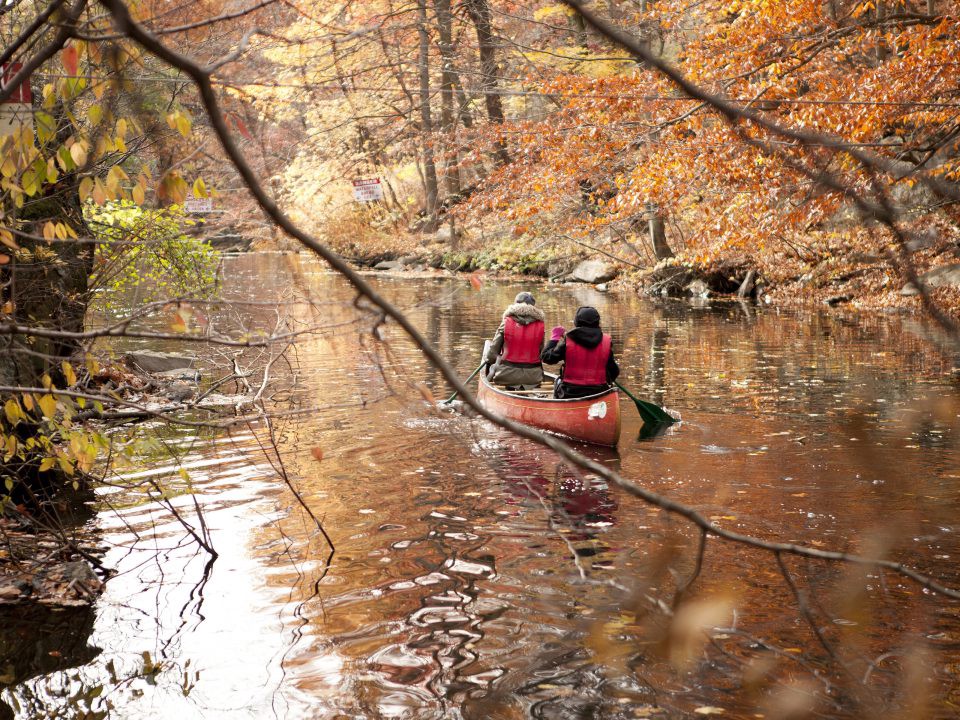
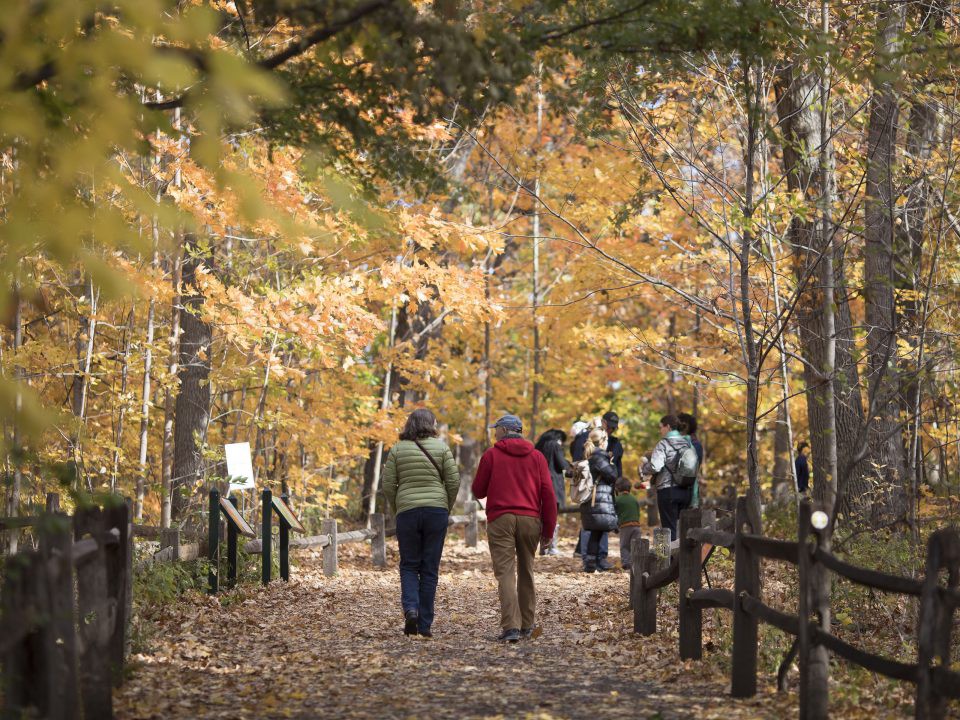
New York Botanical Gardens. Images courtesy of NYBG.
The Ravine at Prospect Park
Located in the heart of Brooklyn and renowned as Brooklyn’s only forest, the Ravine is a haven of trails, waterfalls, bridges and a narrow gorge. The woodland area was subject to soil erosion and overuse until reclamation efforts in the 1990’s and has since been restored back to its natural beauty. The centerpiece of the park is a dramatic 30m gorge. The park offers guided tours throughout the week where visitors can learn about the park’s biodiversity and ways to protect this beautiful area.
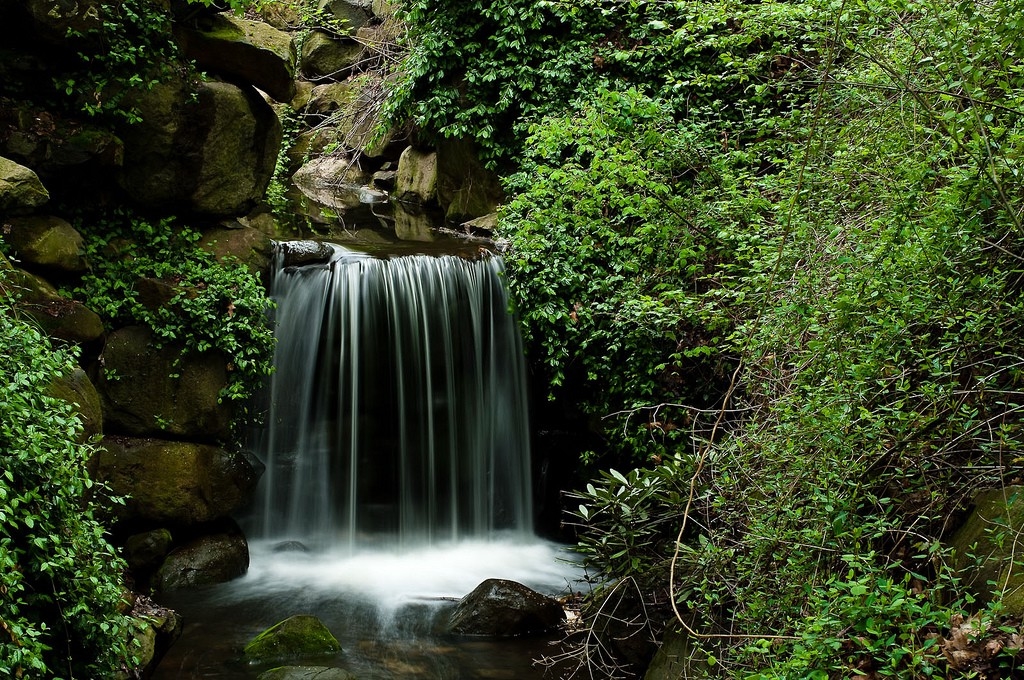
Brooklyn Bridge Park
The Brooklyn Bridge Park was created to transform an area of the Brooklyn waterfront into a nearly 85-acre expanse of parkland. This rundown industrial space previously housed docks, lumberyards, warehouses, and stores. The area has now been transformed to include a world-class waterfront park with rolling hills, riverfront promenades, lush gardens and spectacular city views. Offering a host of events throughout the year, Brooklyn Bridge Park is a favourite among many New Yorkers.
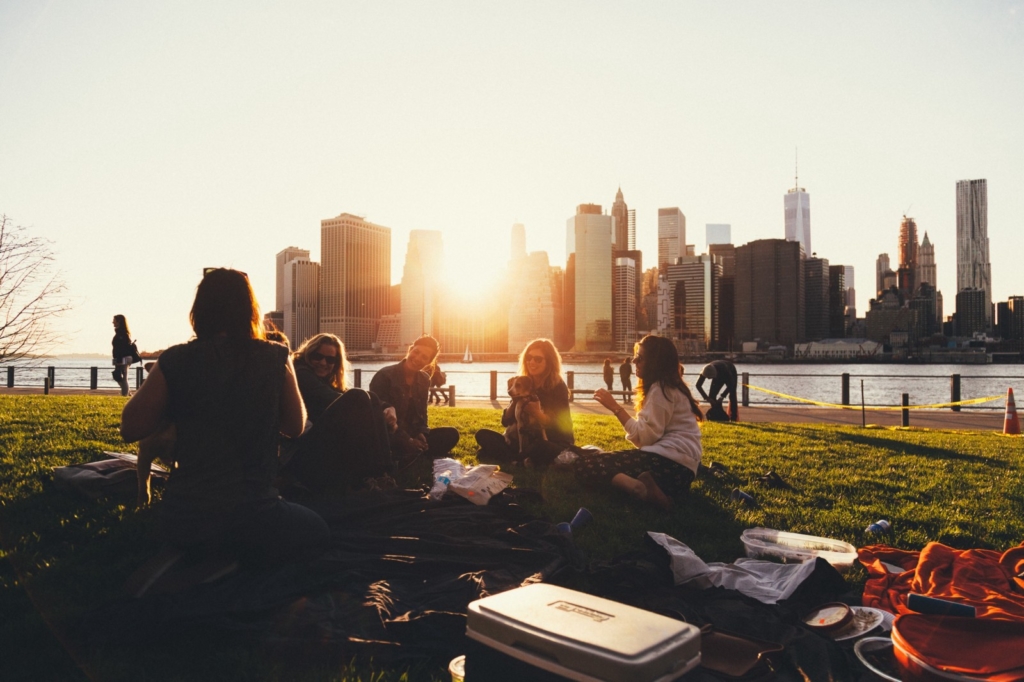
Brooklyn Bridge Park. © Ben Duchac.
Bayswater Point State Park
At the top of a peninsula in the Rockaways and east of Jamaica Bay is Bayswater Point State Park in Queens, Long Island. This park is a haven for natural eco-systems including wetlands, beachfront and woodlands. West Pond, a 9,000-acre wildlife refuge inside Jamaica Bay, attracts thousands of land and shorebirds during migration. Over 330 species have been recorded at the refuge in the last 25 years. With benches all around the trail, West Pond is a prime spot for watching migrating and nesting birds.
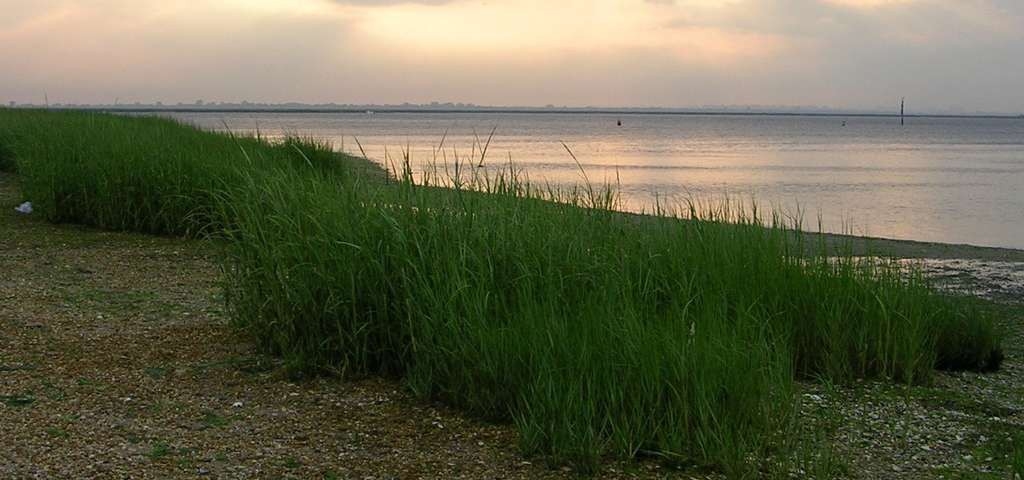
Bayswater Point State Park. Photo courtesy of NYC Parks
Pelham Bay Park
Located in the northeast corner of the Bronx, Pelham Bay Park is more than three times larger than Central Park and is the most significant public park in New York City. Stretching along a 13-mile coastline, the park includes salt marshes, dense forests and open meadows. The park was established in 1888 when New York City acquired the land. With over 2,700 acres of hiking trails, running paths, areas to canoe, playgrounds and picnic areas, Pelham Bay Park offers a world of outdoor adventure.
If you are lucky, you may see Trout Lilies in Spring in the woods of Pelham Bay Park. The colonies of Trout Lilies can be up to 300 years old.
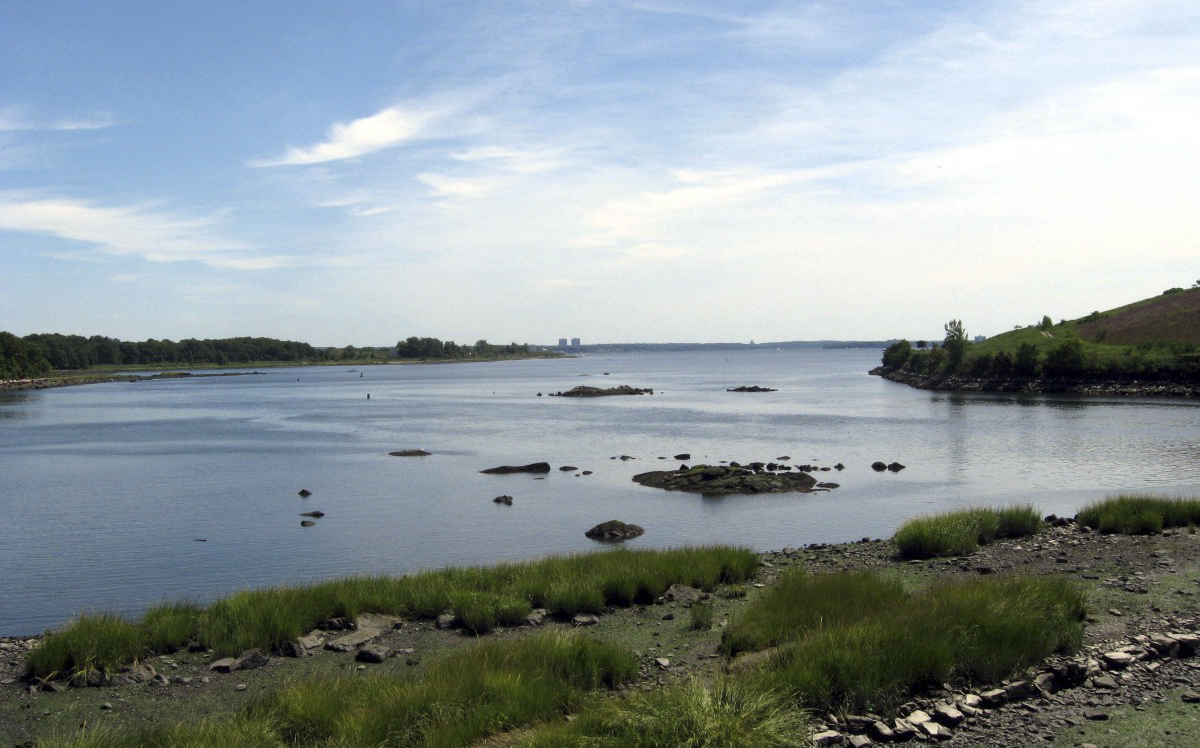
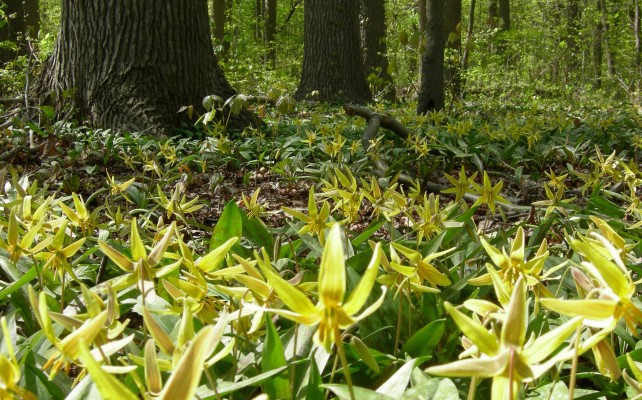
(Left) Pelham Bay Park. © Jim Henderson; (Right) Trout Lilies blanket the moist wood. Image courtesy of the Friends of Pelham Bay Park
Clay Pit Ponds State Park Preserve
Located on Staten Island and only a short ferry ride from New York City, Clay Pit Ponds features beautiful nature trails and several educational and recreational opportunities. This 265-acre preserve sits on the south shore of Staten Island and is full of wetlands, ponds, streams, and woodlands. The area is steeped in history, from early settlers to Leni Lenape Indians. In addition to the educational offerings, visitors are welcome to hike or have an afternoon picnic

Clay Pit Ponds. Photo courtesy of NYC Parks
Inwood Hill Park
A genuinely secret gem of Manhattan is located in the northernmost corner of the island and consists of enormous trees in a virgin forest. Much of the park is undeveloped and remains in a completely natural state. The park boasts 196 acres of green space including predominantly deciduous trees and a salt marsh. The area is prehistoric, and visitors can see caves from a time when native North Amercian tribes inhabited the area.
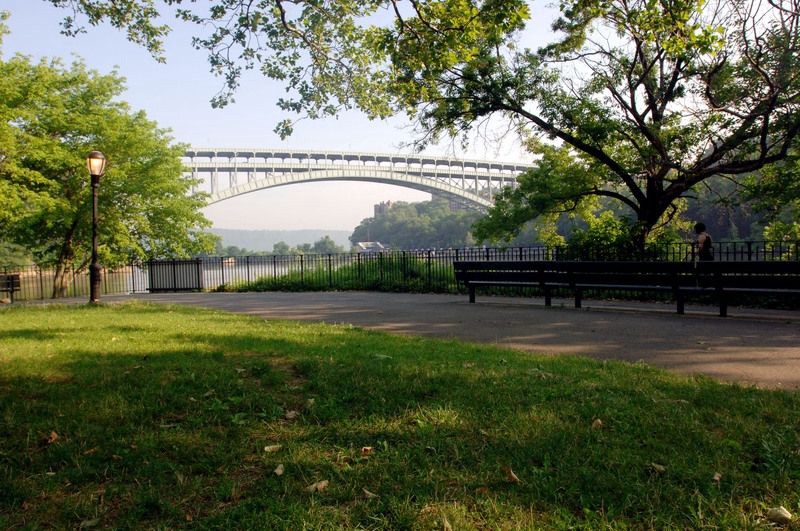
Inwood Hill Park. Image courtesy of NYC Parks
Bronx River Forest
Located about an hour from Midtown, the Bronx River Forest is one of the few remaining forested floodplains along the Bronx River. Visitors can access the floodplain through a variety of paths and boardwalks. This area is home to over 200 species including the Red-Tailed Hawk. A few hidden gems to check out in the area (with unbeatable views of the Bronx River) include Burke Bridge, River Lookout, Island Lookout and the Retaining Wall.
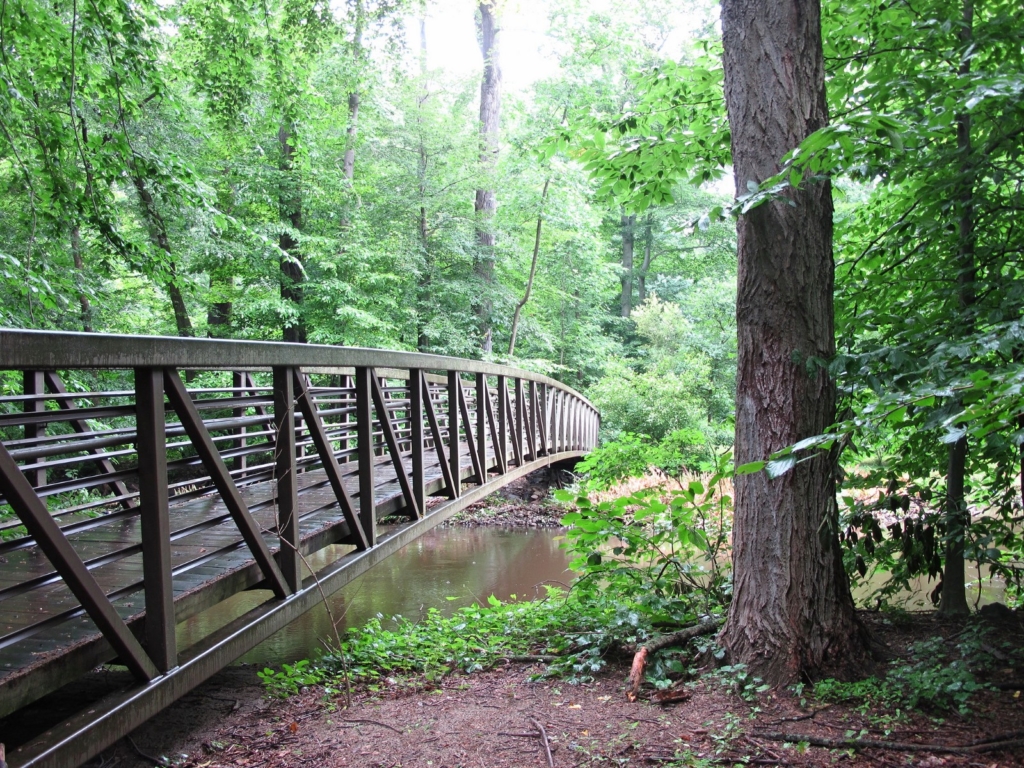
© Kristine Paulus
Harriman State Park
Located just an hour from downtown New York City, Harriman State Park is the second largest state park in New York and is a haven for hikers and campers. With over 300km of hiking trails, 31 lakes, and several public camping areas, Harriman State Park provides the perfect weekend escape from bustling New York City. Harriman is also a haven for black bears who regularly visit the campgrounds. Caution should be made to ensure food supplies are kept well away from sleeping campers. White-tailed deer are often seen in the forest, while signs of beavers can be found in the streams. Sightings have also been made of the elusive northern river otters and the occasional coyote..

